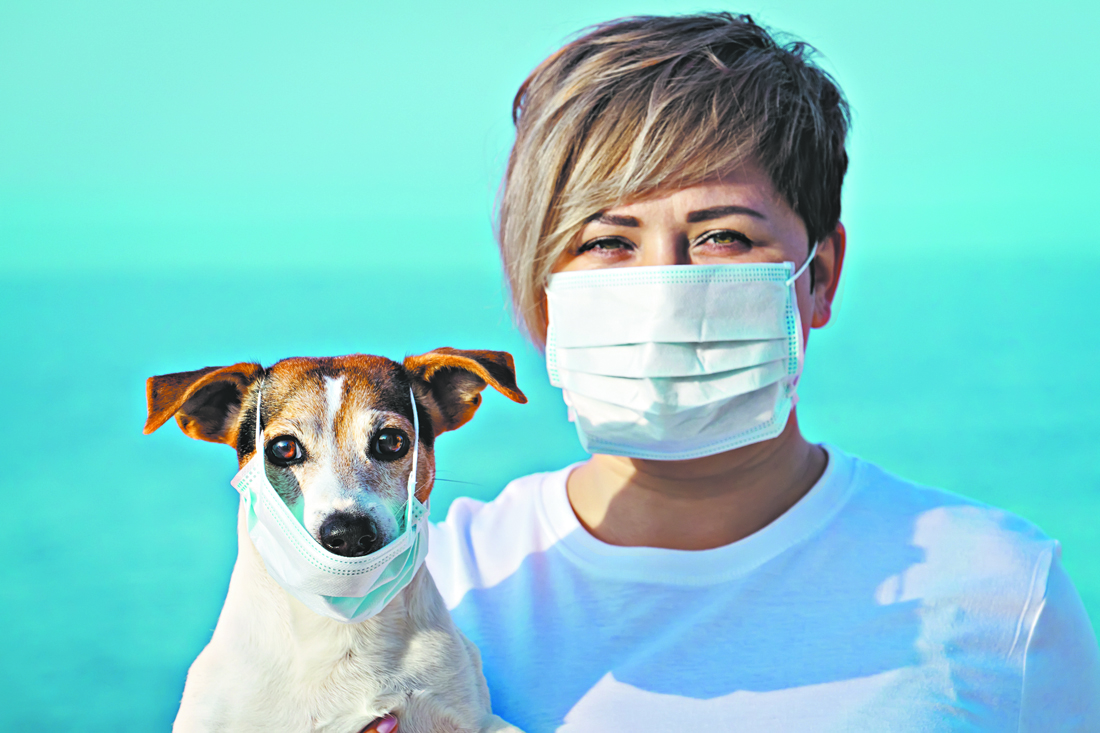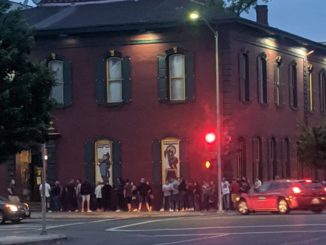
Barely 40 seconds into a conversation about coronavirus, the disease that’s gripping the world with dread over its spread and lethality, Danette York began a well-rehearsed refrain.
“As of today, we remain at zero cases,” said York, director of Butte County Public Health. “So, we have no cases of coronavirus, COVID-19, in Butte County at this time. We hope it stays that way.”
The CN&R spoke with York by phone last Thursday (March 5); that status remained the same through Wednesday morning, but may have changed after press time.
Last Thursday, Gov. Gavin Newsom declared a state of emergency for California. The next day (Friday, March 6), Butte County administrators declared a “local emergency” and “local public health emergency” to expedite response in the event of a diagnosis. Wednesday (March 11), the World Health Organization (WHO) officially called the COVID-19 outbreak a pandemic.
Residents concerned about the virus have thrown a variety of questions at Butte County Public Health (BCPH) in recent weeks—few repeating wild theories stoked by misinformation relayed by politicians and others without medical training.
“We are fielding a lot of calls, and people are afraid,” York said. “We’re trying to answer their questions the best we can, but more importantly be proactive and get information out there to the public.
“We need to keep the fear down as much as possible,” she added. “Even though we have seen some spread in the United States and in California, the risk to the general population still remains low.”
York attributed her assessment to the U.S. Centers for Disease Control and Prevention (CDC). Her department keeps in regular contact with both the CDC and the California Department of Public Health in shaping its response and preparation measures.
BCPH, in turn, regularly updates three community sectors: health care, business and education. Some advice differs; mostly, the same tips apply across the board.
Most public queries relate to testing for coronavirus. Answers have changed as state public health streamlined the process. Now, a health care provider directly sends samples from a patient suspected of contracting, or having been exposed to, COVID-19 to one of the dozen labs statewide conducting the tests.
Other frequently asked questions revolve around masks and pets (more on those later).
Fear remains a factor. In the North State and beyond, folks have gone into crisis mode for coronavirus (see “Preparations,” Second & Flume, Feb. 27). Images of empty shelves at warehouse stores tell the story.
York refrains from judging how far is going too far, saying she thinks “people need to take their own situations into consideration and make the best decisions for them and their family.”
However, as she suggests, “If you need to stock up on supplies—such as tissues or soap, things that you might need if you were to have an ill person in your home—I would recommend you do so gradually, not necessarily go out and spend a whole paycheck right away.”
Here are some reasonable steps for preventing and preparing for coronavirus as prescribed by public health officials:
Scrub up
Wash your hands frequently for at least 20 seconds. Some experts recommend humming “Happy Birthday”—the song—twice to keep count; others, saying your ABCs, especially when helping young children wash up. (See Weekly Dose, page 13, for other ideas.)
York advocates for soap and water over sanitizing gel, though the latter is fine in a pinch. The old-fashioned method is “tried and true,” she said. “Hand sanitizer hasn’t been around as long.”
Public Health advisories also encourage people to refrain from coughing into the palm of a hand; instead, cover the face with the bend of an elbow, a sleeve or tissue. Also, make a conscious effort to not touch your eyes, nose or mouth with unwashed fingers.
Sick? Leave!
Public health guidelines bluntly state, “Stay home when sick.” That’s the top common sense precaution for preventing the spread of coronavirus—or any communicable disease, for that matter.
BCPH further advises that employees and students who arrive ill or become ill should be separated from others and sent home, then be allowed to work from home if quarantined. Families and businesses/schools should make contingency plans to account for sick leaves and also should cancel nonessential travel.
Mask etiquette
At this point, some people need face masks. Those who are sick should don a surgical mask before coming in close proximity of others—in a vehicle, in a room—and before entering a medical facility. Those in health care should wear the more refined N95 mask.
But most people don’t need them; that’s according to both the CDC and BCPH, who say that healthy folks can go about their lives per usual.
“Just the general population, to wear a mask wherever they go, that would be going above and beyond,” York said.
In any case, masks needn’t be worn 24/7 nor stockpiled. Dr. Jerome Adams, the U.S. surgeon general, recently tweeted that Americans should stop buying them because demand among citizens jeopardizes the supply for hospitals and other health care providers. That’s not York’s prime rationale.
“There’s a concern that if [coronavirus] becomes widespread in the United States, we’ll not have a large enough supply of masks [for everyone] once they’re needed,” she said, “if everyone uses them now, when they’re not needed.”
Keep it clean
Throw away used facial tissues and disinfect surfaces, such as tables, where someone sneezes.
Scientists still don’t know everything about Covid-19, which comes from the same virus family as SARS and MERS (see “Going viral,” Healthlines, Feb. 27). The illness spreads via droplets of breath, and other coronaviruses can survive on surfaces anywhere from a few hours to a few days. According to the WHO, researchers haven’t determined the viability of Covid-19.
Our best friends
Another area under study is transmission between species.
Both animals and humans have contracted Covid-19. According to BCPH, there’s been no confirmed instance of a person getting this coronavirus from their pet, or vice versa—nor evidence this categorically cannot occur. The World Organization for Animal Health is investigating a weak-positive test in a Hong Kong dog that authorities there attributed to human-to-animal transmission. Thus, Hong Kong officials warned against kissing pets.
BCPH proposes more modest safeguards: If sick, or caring for someone who’s sick, wear a mask while near a pet or service animal. Better still, if possible, have someone else care for it.
“I’m sure that will be a concern,” York said. “Everybody loves their animals.”



